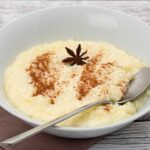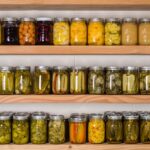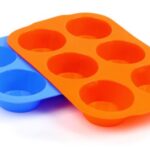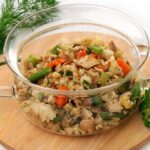Bamboo plates are a popular eco-friendly alternative to plastic plates. Since plastic is considered harmful to health and the environment, bamboo plates are becoming increasingly popular due to their non-toxic nature, modern style, and sustainable production.
Plastic plates and bowls contain chemicals that can contaminate food, especially when serving hot meals. Even paper can contain harmful compounds and alter the taste of food. When served on bamboo plates, the food retains its flavor and the risk of contamination is significantly lower.
If you want to avoid single-use plastic at outdoor parties and gatherings, bamboo plates are the best alternative. If you dispose of bamboo plates, they will break down and go back into nature.
Unlike some other compostable products, bamboo plates are more stable and you can easily serve both liquid and solid foods in them. These plates are suitable for appetizers, snacks, side dishes, fruits, desserts, and everyday use.
Parents choose bamboo plates because they want to serve food to their little ones in unbreakable and attractive bowls. Bamboo plates are incredibly light and will never shatter if knocked on the floor.
How long do bamboo plates last?
Disposable bamboo plates are intended for one-time use, but some durable products can be durable enough to be washed with light dish soap and reused two to three times. You can use a plate multiple times during a camping trip.
Are bamboo dishes washable?
Disposable bamboo plates are not designed to be cleaned and reused. However, some more robust products can be wiped or rinsed to be reused the same day or for a short period.
Reusable bamboo plates have a polished, smooth surface and can be washed and reused multiple times.
Can Bamboo Plates Go in the Dishwasher?
Certain types of bamboo plates can be placed in the dishwasher according to the manufacturer’s instructions.
Bamboo fiber plates (bamboo melamine) have a matte finish making them easy to clean and dishwasher safe. The temperature in the dishwasher should not be higher than 70 °C. Temperatures that are too high can shorten the lifespan of bamboo fiber plates.
How to Clean Bamboo Plates
Reusable bamboo plates need to be washed before first use. Use warm water and a mild detergent.
You should wash the plates after each use with a soft sponge and very little mild soap. Avoid abrasive cleaners. Dry them well with a soft cloth or air dry them in a well-ventilated place. Do not leave the plates exposed to sunlight for long periods.
Can bamboo plates go in the microwave?
Bamboo plates and bowls are not suitable for heating food in the microwave. If bamboo plates are exposed to high temperatures, the glue that binds the bamboo fibers together can become loose, which can cause the plate to break over time. Bamboo plates can also burn if exposed to high temperatures.
When you try to heat bamboo fiber dishes in the microwave, the moisture from the bamboo can evaporate, which can cause warping. However, the biggest problem is that bamboo binders such as melamine and formaldehyde migrate at high temperatures and can contaminate your food.
Can bamboo plates go in the fridge?
It is best not to put bamboo plates in the refrigerator because bamboo material can deform when exposed to moisture or cold. Bamboo fiber plates (made of melamine and bamboo fibers) are considered safe for refrigerator storage. However, those plates shouldn’t be used for hot food.
Are bamboo fiber plates safe for serving food?
Although bamboo itself is safe for food contact, other materials used in combination with bamboo can be harmful to health. Bamboo fiber plates contain bamboo fibers that are bonded and coated with melamine. Research has shown that melamine can be harmful to health.
Melamine can get into the food if the plate is exposed to a temperature of more than 70 degrees Celsius. Therefore, very hot foods should not be served on bamboo melamine plates, nor should these plates be placed in the oven or microwave.
So-called bamboo fiber tableware is simply plastic with added bamboo fiber. These products are not 100% bamboo, and sellers call them bamboo for marketing purposes. To choose melamine-free plates, check whether melamine is listed in the ingredients list. Choose a natural bamboo look because bright colors can be a sign of the presence of melamine.
This post contains links to Amazon. The publisher may get paid if You purchase something through the links without additional costs to You.
Related product: Belari Bamboo Plate Set is made of 100% bamboo finished with a protective seal. This set combines minimalist and modern design and brings a natural aesthetic to your table.
Are reusable bamboo plates worth it?
Yes, if you make a comparison – bamboo plates vs. plastic plates or paper plates reusable bamboo plates come out on top. Bamboo tableware is more stylish, stronger, and more environmentally friendly than plastic tableware. Compared to palm leaf plates and other disposable tableware, reusable bamboo plates are more economical and can save you money when purchasing disposable plates.




